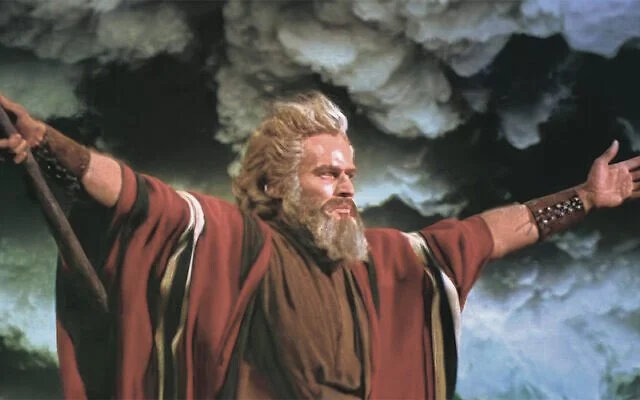Caped Pharaohs, Thirsty Queens and Golden Calves: My Annual “Ten Commandments” Watch
Like many Americans, watching “The Ten Commandments” every year during the Easter season is an annual tradition for me. Since the 1970s, ABC has broadcast the classic film, which tells the biblical story of the Israelites’ exodus from Egyptian slavery. This year it aired on April 12, a little over a week before Easter Sunday.
Although for some, the film is a chance to reflect on their religious faith, for me, it’s less about spirituality and more about appreciating its place in film history, the collective experience of watching it alongside others and the seasonal signal that spring has arrived.
This has nothing to do with the film per se, but its annual airing always seems to line up with one of the first weekends where you can finally shake off the bitterness of winter, throw open your windows, and air out your abode. That simple seasonal joy makes you like the film a little more by default.
They Don’t Make Movies Like This Anymore
Directed by Cecil B. DeMille, the film was released in 1956 and quickly became one of the most renowned epics ever made. “Mr. DeMille” is a Hollywood legend, and “The Ten Commandments” may be one of the biggest reasons. At its core, “The Ten Commandments” is more than just a film; it’s an experience.
Known for his ability to create large-scale productions, DeMille brought to life the biblical story with sweeping sets and grand spectacle. The film’s incredible special effects (for the time), including the famous parting of the Red Sea, are iconic in cinematic history.
The film’s enduring appeal also owes much to the performances of its two Hollywood titan lead performers: Yul Brynner and Charlton Heston. Brynner’s Pharaoh Rameses is both commanding and tragic, a man torn between his duty and his emotions, while Heston’s Moses is noble, conflicted, and resolute. Their portrayals have such weight, power, and chemistry that they perfectly match the film’s sweeping narrative.
It Mixes Well With A Few Drinks
Beyond its awe-inspiring scale and dramatic moments, there’s also a bit of delicious silliness to the film.
I mean, Yul Brynner’s encompassing stare as Pharaoh Rameses burns through the screen, and his wardrobe—those fierce capes and dramatic tunics—always wow me. And don’t get me started on Anne Baxter’s Princess Nefretiri, whose thirst for Moses is so extra, it drips off the screen.
There’s also Charlton Heston’s memorable scene as Moses where he witnesses God for the first time in a burning bush. Afterwards, his hair turns into this huge, wild gray mane, and his overall appearance seems to scream, “I have just seen the divine!”
Heston’s larger-than-life presence is so over the top in that scene (and many others) that the film confidently strides into campiness. It’s what makes the film so much fun to watch and it's probably the reason it remains forever etched in pop culture.
We Treasure and Laugh at It Together
To this end, it feels like “The Ten Commandments” was built for the meme-era.
Each year when it airs, people live-react to “The Ten Commandments” on social media, sharing gifs of Moses dramatically parting the Red Sea or the Pharaoh’s angry monologues.
There’s something about how the film's sheer spectacle and dramatic flair make it perfect for modern internet culture, where even the most serious moments can be turned into comedic gold.
How can you not laugh at how quickly the Israelites give up on their leader Moses after their exodus? When Moses ascends Mount Sinai to receive the Ten Commandments in stone tablet form, I’m always amused.
He’s gone for what feels like moments, only for the newly-freed Israelites to start worshipping a golden calf—as if they couldn’t last five minutes without divine supervision. It’s a dramatic and serious moment in the film, but it’s also silly how quickly they fall into idolatry.
Like I said, it’s a fun watch and rewatch.
I might not connect with the film on a religious level, but it still means a lot to me in other ways.
“The Ten Commandments” is a culturally significant film—not just because of the spectacle of its filmmaking, but because of its reach. In an era when so much of our society feels fractured, this is one of the rare and dwindling cultural experiences where many Americans of all different stripes watch the same thing, at the same time.
Watching “The Ten Commandments” each year isn’t just about the movie—it’s about being part of a rare shared moment in time. And when it airs right as spring is starting, it feels like a celebration of the season—something we can all enjoy, no matter what we believe.
CRAIG SAUER is a writer, communicator and former journalist living in Fitchburg, Wis. He used to have a movie review show called The InstaFlicka Podcast.

